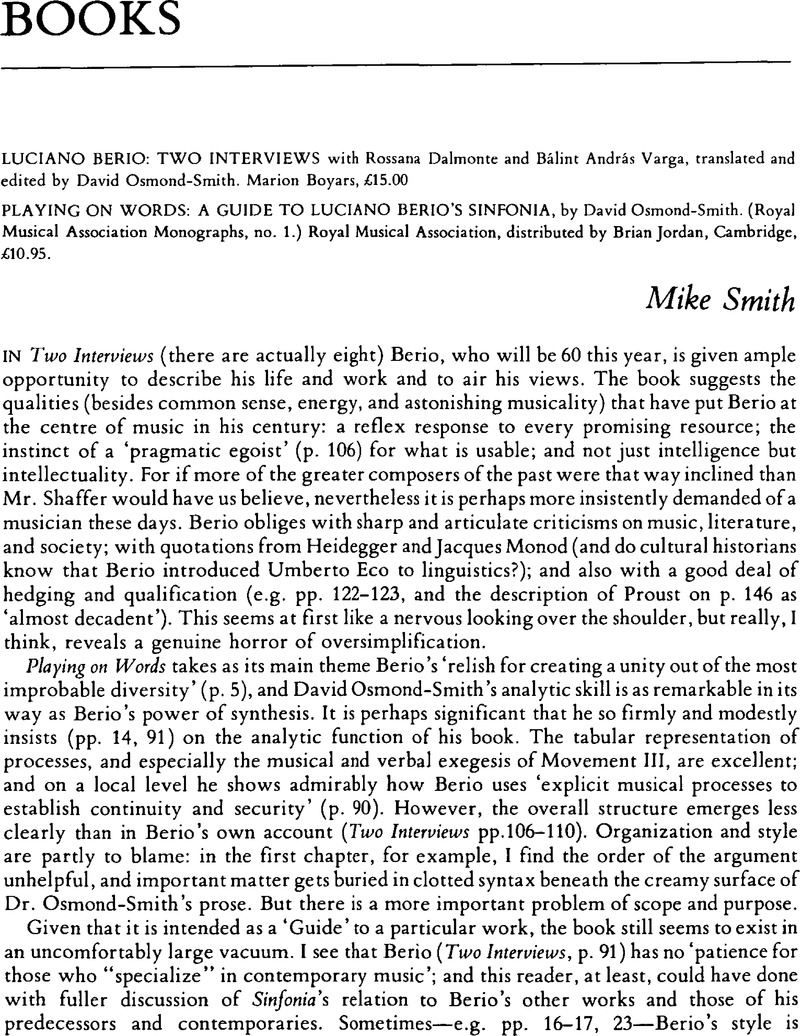No CrossRef data available.
Published online by Cambridge University Press: 04 February 2010

1 ‘Ulysses, Order and Myth’, Dial, no. 75, pp. 480–483Google Scholar. Is Eliot present also in the ‘sèche saison’ and the water, fire, and rose imagery in Movements I and IV (Playing on Words pp. 10–12, 74)?Google Scholar
2 This is interestingly discussed by Berio on pp. 141–143 of Two Interviews. Compare too the much less realistic earlier account in ‘Poesia e musica—un’ esperienza', Incontri musicali, no. 3 (1959), pp. 98ffGoogle Scholar. There is an English translation of the latter, not listed by Mr. Osmond-Smith, by John Saunders in Prospice 10: Words/Music, ed. Edwards, Michael (Aquila, 1979).Google Scholar
3 See Eliot's insistence on the need for difficulty in modern poetry, in ‘The Metaphysical Poets’(1921; reprinted in Selected Essays, p. 289).Google Scholar
4 On p. 87 certain parodies of Lévi-Strauss in Movement V are dismissed as ‘placed deliberately beyond [comprehensibility]’. They seem no less meaningful than the rest of Berio's ironic ‘commentaire’, and I suggest comparison of passages gamma and delta with Two Interviews pp. 70, 110Google Scholar and Playing on Words pp. 54, 71.Google Scholar
* Renamed in 1981 the International Council for Traditional Music